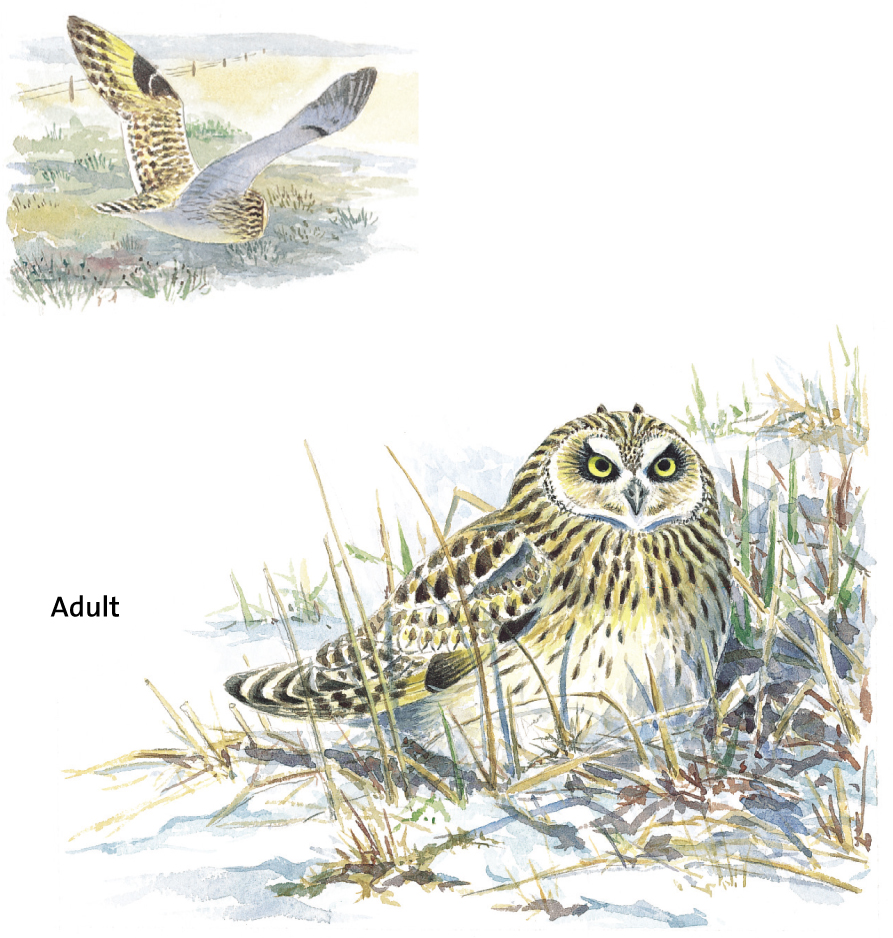
Long-eared Owl
Asio otus

SIZE AND DESCRIPTION
34cm. Usually looks slender though this varies with alertness. Cryptic mottled brown plumage with orange tones to breast and face, eyes orange, ear-tufts long (though may be held flattened). Underpart streaking covers entire belly. Wings long, with orange patch on upperside primary bases.
VOICE
Low repeated hoots form territorial song. Begging chicks have ‘squeaky-gate’ call.
HABITAT
Breeds across much of northern hemisphere. Uncommon in Britain though some European birds move to Britain in winter. Light woodland and woodland edges, hunts over more open ground.
FOOD AND HABITS
Preys on small rodents. Hunts at night, by day roosts in thick cover, sometimes in small groups.
Short-eared Owl
Asio flammeus

SIZE AND DESCRIPTION
37cm. Larger than Long-eared Owl, paler with colder, yellower plumage tones, streaking on underside fades leaving unmarked pale belly. Eyes yellow with black surround giving intense expression. Shows large yellowish patch on primary bases of upperwing. Ear-tufts short and inconspicuous.
VOICE
Barking call, hollow series of hoots when breeding.
HABITAT
Very wide global distribution. Nomadic habits, moving according to prey availability. Uncommon breeder in upland Britain, more numerous and coastal in winter. Moors, heaths and, especially in winter, rough grassland.
FOOD AND HABITS
Feeds mainly on Short-tailed Voles. Hunts by day as well as dusk and dawn, with low quartering flight. Sometimes several patrol the same field.